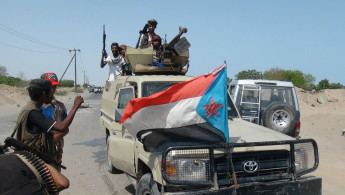Yemen's road to separation looks increasingly likely
In Yemen's southern port city of Aden, fighters often labelled in the international press as loyalists to the country's government-in-exile are revelling in victory.
They've been able to pull off one of the first major reversals to the Houthi forces who, along with allied Yemeni army units loyal to ex-president Ali Abdullah Saleh, had looked likely to take the city. Now, the Houthi-Saleh forces have been cut off, trapped on the peninsula Aden's old city is situated in, and looking increasingly likely to wave the white flag in the city.
A victory for President Abd-Rabbo Mansour Hadi then, and a first step on the long bloody road to re-establish the authority of the Yemeni state over all parts of this conflict-ridden country.
Except that these 'Hadi loyalists' are not waving the red, white and black tricolour of the Republic of Yemen. There is only a slight difference in the flag that is now ubiquitous across Aden and other parts of southern Yemen, but, to those who know its meaning, the triangular patch of blue and the solitary star mean one thing – these men are secessionists.
They are waving the flag of the former People's Democratic Republic of Yemen, more commonly known as South Yemen, once upon a time the Arab world's only Marxist state, but one that only lasted for 23 years, before unity with North Yemen in 1990 led to the formation of the united Yemen that exists on tenterhooks today.
Since Yemen's civil war in 1994, when Saleh put down an attempt by disaffected southern politicians to put an end to Yemen's unity experiment, disaffection in the south has risen, eventually coming to a head with the rise of the 'Southern Movement', Hirak, in 2007.
Hirak was always a largely peaceful movement, priding itself as such, and using its civic nature to highlight what they regarded as the difference between themselves and the northerners of Yemen's mountainous interior.
The rapid advance by the Houthi-Saleh forces on the south, and specifically Aden, was the last straw for Hirak. Southerners felt they had to defend their cities and towns against groups they saw as foreign invaders from the north.
Now that they have picked those weapons up, and, with the aid of the Saudi-led coalition, are forcing the Houthi-Saleh forces out, it will be difficult to get them to simply put them down again.
So what next?
Will those same southern fighters, angry at the north, and largely fighting to defend their homes, risk their lives to support the government in the north of the country, if it ever gets to sending in ground forces to fight the Houthi-Saleh forces there? It is unlikely that they will risk losing their lives for a country that they do not regard as their own, and in areas where the Houthis and Saleh are far more entrenched than they are in the south.
The war crimes committed in Aden by the Houthis and Saleh since early March, incidentally before the Saudi-led coalition began bombing Yemen, have merely proven to many southerners that the groups they perceive as 'northern forces' will never allow them to be out of their control.
Hirak supporters may not have a particular affinity for Hadi, but he is a southerner, and his forcible removal after two years in office was more 'evidence' that northerners would not tolerate a southern figure in power.
Even if, perhaps due to the southerners' inherent divisions, or a lack of international support, the southerners do not achieve secession, the hatred engendered in the past few months, following on from years of resentment, will not dissipate for a very long time.
It is a hatred that may take a generation to remove, and a poor country like Yemen, that desperately needs to develop, the time may simply not be there.



